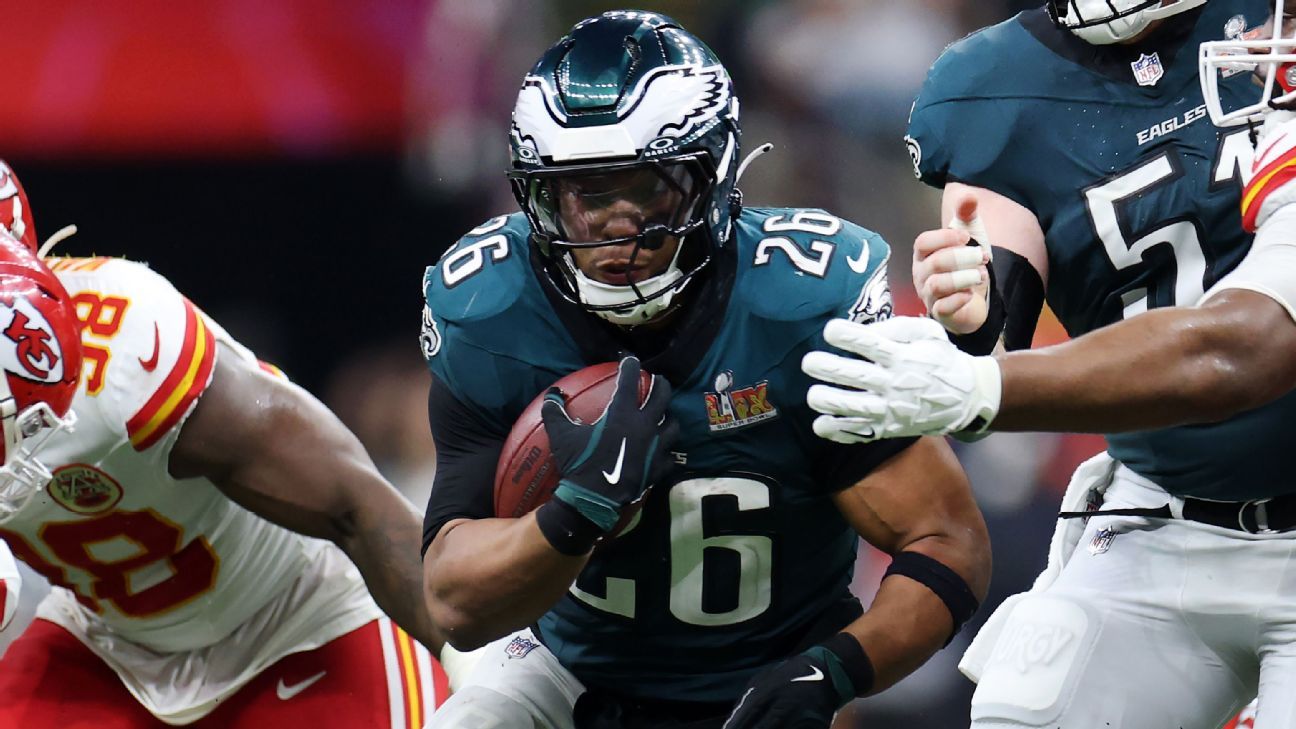Products You May Like
The Philadelphia Eagles have gained recognition as a powerhouse team in the NFL, with their recent performances culminating in a Super Bowl appearance. A significant aspect of their success is attributed to their unique approach to player utilization, particularly at the running back position. Unlike many other teams in the league, the Eagles have adopted a strategy that challenges traditional norms regarding the value and role of running backs.
The Eagles have prioritized the development and integration of their running backs into the offensive scheme in a way that maximizes their potential impact on the game. This has been evident in their offensive plays that blend running and passing effectively to keep defenses guessing. The choice of running backs and their utilization within the framework of the Eagles’ offense has played a critical role in sustaining their performance over the season.
One of the standout players during this transformative period has been a running back whose explosive capabilities and versatility have elevated the Eagles’ offensive strategy. His ability to perform in various facets of the game — from rushing to catching passes — illustrates how the Eagles have tailored their offensive approach to harness the full capabilities of the running back position.
In addition to the success on the field, this approach reflects a broader shift in NFL team philosophies regarding how running backs are perceived. Historically, running back performance and value have fluctuated, with some teams increasingly opting for a committee approach or de-emphasizing the position altogether. However, the Eagles’ willingness to invest in a singular impactful running back has set them apart from other franchises, many of which continue to rely on a more traditional distribution of carries among multiple players.
As the Eagles’ strategy has unfolded, it has also influenced the market dynamics for running backs across the league. Other teams are now observing the Eagles’ success and re-evaluating their own strategies regarding the position. This could lead to a renaissance in how running backs are valued and utilized in the NFL, with teams recognizing that a high-caliber running back can significantly contribute to a championship-caliber team.
The Eagles’ innovative approaches go beyond just individual performance metrics; they also target overall team efficiency and effectiveness. The optimization of the running back role has allowed the Eagles to maintain a balance in their offensive game plan, providing them an edge in competitive matchups. Their offensive line has also played a crucial role in facilitating the success of the running back, contributing to the overall effectiveness of their running game.
Moreover, the Eagles have adeptly navigated the challenges posed by the modern game, responding to defenses that have evolved to stifle traditional running plays. By adopting a multifaceted rushing strategy that includes both power running and more agile, unpredictable plays, the Eagles have kept opponents on their toes. This adaptability is a testament to their forward-thinking approach to football strategy.
Ultimately, the Eagles’ Super Bowl aspirations are closely tied to how they differentiate themselves in leveraging their running back’s talents. The ongoing evolution of the running back role in conjunction with the Eagles’ commitment to innovation could serve as a blueprint for other teams aiming to optimize their own rosters.
While the future of the running back position remains uncertain, one thing is clear: the Eagles have rewritten the narrative surrounding the value of running backs in the NFL and shown that with the right utilization, a star running back can be a game-changer in pursuit of a championship. As the league continues to evolve, the Eagles’ leadership in redefining the role of running backs could usher in a new era of football strategy.
